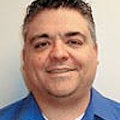Location: Mountain View, CA
Number of shops: 1
Years in business: 34
Employees: 14
Sq. footage: 11,300
No. of Bays: 15
Volume: 15 per day
Average repair cost: $760-$820
Annual Revenue:
$2.4 million
When Larry Moore entered the auto repair business in 1972 as owner of Larry's Bug Shop (a VW repair service), he learned some valuable lessons. Despite having (1) experience, (2) a college education in business and (3) lots of customers, he wasn't making any money.
Moore realized there was more to running a profitable shop than a business background and technical skills had prepared him for. He had to take a different course, one that would allow him to systematize his operation and apply a whole new world of learning to it.
Over the course of their entry into the repair industry, Moore and wife Laurie, who decided to join him in business, have engaged in a process of learning and applying new methods that have helped them build their current operation, Larry's AutoWorks. Both took Automotive Management Institute (AMI) classes, eventually becoming Accredited Automotive Managers (AAMs). Both also began applying productivity formulas to every part of their business. They put into place systems that would help them and their employees meet goals through a mutual understanding of productivity factors and how they are measured.
1. In 2006, Larry's AutoWorks was voted the best auto repair in their area for the fourth year in a row by the readers of the local newspaper. Here is the staff that made it happen. Bottom row, from left: Roberto Quintana, driver; Ivan Castillo, technician; Bailey Tai, technician; Luis Martinez, service writer; Warren Washer, technician; Bob Dickerson; technician; Laurie Moore, CFO/owner, Top row, from left: Larry Moore, CEO/owner; Mary Earnest, office manager; Rick Septon, technician; Paul Seghposs, production manager; Phil Lambert, parts; Rick Householder, service advisor.
2. Luis Martinez, service writer, goes over the bill with a customer at the end of the day.
3. Technicians, such as Bailey Tai on left, work closely with Parts Supervisor Phil Lambert to make sure the right parts get ordered for repairs.
4. (From left) Ivan Castillo, GM technician; Warren Washer, German vehicle technician; and Paul Seghposs, production manager, work together to solve a difficult diagnostic problem on a vehicle.
(All photos: Larry's AutoWorks)
"This is very much a managed business," explains General Manager Cecil Bullard. "We have a system in place for everything we do. We also make sure all of our employees understand these systems. They know how we measure productivity. Because they understand, they have a lot of freedom to find ways to do their jobs and increase productivity."
Bullard explains that managers and customer reps understand that it costs approximately $167 to "bring in a new customer," and only one in three prospective customers does business. That means employees have approximately $400 at their disposal to spend (at their discretion) to help turn a first-time buyer into a regular customer. Bullard says this freedom rewards both the employee and the business.
"When people know their jobs and have freedom like this, they work harder. They see their effect on productivity. Because pay here is productivity-based, they see how the entire operation is rewarded," says Bullard. "When an employee leaves here at night, he either is satisfied because he knows he put in a good day's work or he knows he has to work harder tomorrow to meet goals."
These systems account for the shop's 120 percent productivity rating. Translated, that rating indicates that employees on average are putting 48 hours worth of work into a 40-hour work period. That's efficiency, according to Bullard.
This efficiency has helped build what might be described
as an ideal customer and operational base. Consider the following:
* Women holding professional positions, currently the most sought-after customer segment, make up 65 percent of Larry's business.
* Existing (repeat) customers account for 70 percent of overall business.
* Half of the shop's available business is booked six months in advance.
The shop continues to look for ways to improve. Bullard and Moore each take at least 160 hours of classes each year. Both read voraciously and pass business and marketing books to one another. Moore continues instituting changes, including setting new goals.
Among the latest, he wants to change the industry. "We envision this as a destination shop," says Bullard, "We see other shops operating similarly, running by the numbers." To that end, Larry's plans to market its own efficiency software to help other shop owners.
Moving from Beetle specialists to full service repairers to software marketers, the Moores' journey isn't your typical bugs-to-riches story. It is one, however, that could transform the industry.
- Tim Sramcik
About the Author

Tim Sramcik
Tim Sramcik began writing for ABRN over 20 years ago. He has produced numerous news, technical and feature articles covering virtually every aspect of the collision repair market. In 2004, the American Society of Business Publication Editors recognized his work with two awards. Sramcik also has written extensively for Motor Age and Aftermarket Business World. Connect with Sramcik on LinkedIn and see more of his work on Muck Rack.